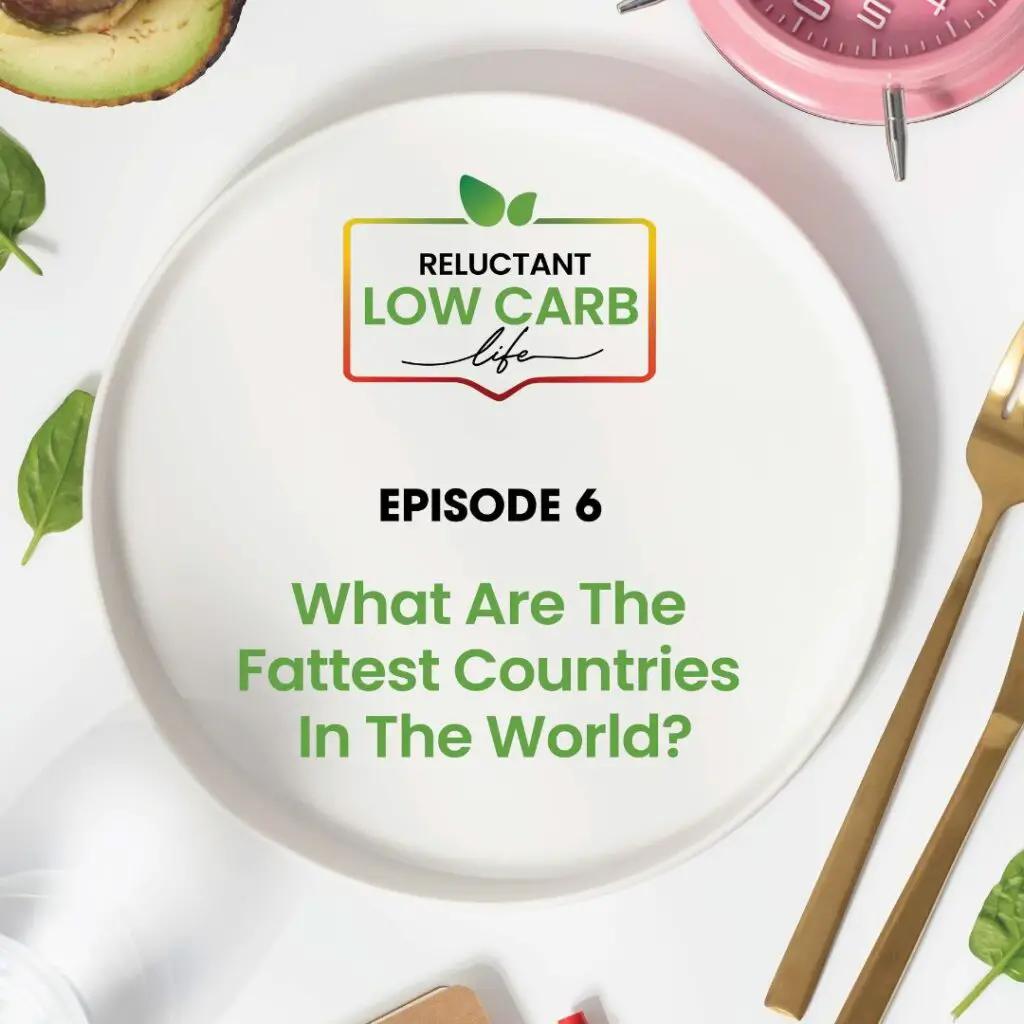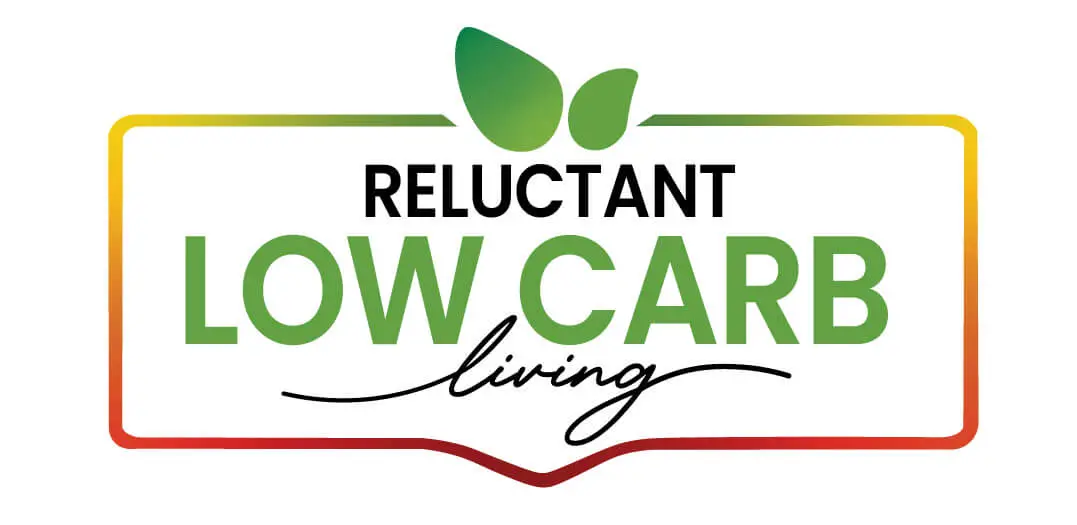Many countries make the list of the fattest countries in the world list. But one country consistently stands out as having the most obese people.
The United States is the most obese country in the world for the total number of obese people in one country and is also in the top 20 for the highest percentage of obesity by population. If you compare the population percentages for the most obese, the Cook Islands gets first place. Even if we compare the United States’ obesity rate to many European countries, it is still very high. This clearly shows that the United States has an obesity problem.
Table of Contents
- United States Is The Fattest Country In The World
- Why Is The United States The Fattest Country in The World?
- Other Countries That Are Also Considered Fat
- Comparing European Countries And Their Obesity Rates With The United States
- Frequently Asked Questions
- Related Question
United States Is The Fattest Country In The World
The United States has been crowned the fattest country in the world. As of 2022, the United States has the most obese people globally – over 77 million Americans are obese.
The total population of the United States is over 330 million; that means a large percentage of Americans are considered obese.

Over 33% of Americans are considered obese, and most predict that this will only worsen unless drastic changes are made; the obesity numbers are expected to continue to rise in the next few years.
Why Is The United States The Fattest Country in The World?
Many Americans ask themselves: How did America become one of the fattest and most obese countries in the world? What have we done differently than other countries that do not have the obesity problem as America has?
Read on to learn more about why many Americans are obese.
Portions In America Are Simply Larger Than In Other Places
Studies have shown that America’s portion sizes are 20% larger today than in 1963. Americans consume more food than any other place.
I know a large soda in Asia is the same size as a small American. Also, one scoop of ice cream in America is more like five scoops in Asia. Our portion sizes are just huge.
Even in America these days, candy bars come in super sizes. When you go to a checkout counter at a grocery store, it is no longer just one small candy bar; most are in super-large sizes.
No doubt added to this is eating fast food, highly processed foods, and so much sugar and other things that have been added to our foods. It is not just what we eat and how much we eat but also what we eat.
Americans Do Not Fully Understand Healthy Eating
In America, the diet industry is over 20 billion dollar industry. And besides this and the American craze for dieting, America is still obese.

That is because many Americans do not understand what healthy eating looks like. We are not eating fresh fruits and vegetables; we are not eating natural foods. Instead, we are eating highly processed foods.
We are living in a fast-food nation where it is easier for us to drive through McDonald’s and get a hamburger and french fries than it is for us to go home and make ourselves a healthy salad and dinner.
The Predominance of Ultra-Processed Foods in the American Diet
The American dietary landscape is increasingly dominated by ultra-processed foods, which raises significant health concerns. Recently, it’s been observed that most Americans—over 60%, with some estimates even reaching 90%—rely heavily on these ultra-processed items for their daily nutrition.
These foods are characterized not only by their high levels of added chemicals, which are often far removed from their natural origins but also by their excessive amounts of salt and sugar.
Ultra-processed foods in the United States encompass a wide range of products, from the apparent fast food and snack items to more insidious forms like flavored yogurts and ready-to-eat meals. Often masquerading under the guise of convenience and sometimes even ‘healthiness,’ these foods have gradually become staples in the American kitchen.
The problem with such foods is their composition: they are typically loaded with additives, preservatives, artificial colors, and flavor enhancers. These ingredients extend shelf life, enhance taste, and improve texture but contribute little to no nutritional value.
The high consumption of ultra-processed foods is linked to various health issues. The excessive intake of salt and sugar, typical in these products, is a known factor in the development of chronic conditions like obesity, heart disease, and diabetes. Moreover, the reliance on chemically altered foods means a reduced intake of whole, nutrient-rich foods, leading to deficiencies and imbalances in essential vitamins and minerals.
Even products that are often perceived as healthy, like flavored yogurts, can be deceiving. Despite their reputation as a wholesome snack or breakfast option, many yogurts are heavily processed and contain high amounts of added sugars and artificial flavors. This misleading perception exacerbates the problem, as consumers might unknowingly contribute to their excessive intake of ultra-processed foods while believing they are making healthier choices.
The prevalence of ultra-processed foods in the American diet is a complex issue tied to various factors, including marketing strategies, lifestyle demands, and economic considerations. These foods’ convenience and often lower cost make them appealing choices, especially in the fast-paced American lifestyle.
However, the long-term health implications of this dietary trend are concerning, highlighting the need for increased awareness and a shift towards more whole and minimally processed foods in the American diet.
Many Americans Are Inactive And Not Fit
Americans are not fit or healthy. We are inactive. We spend most of our time behind a desk, sitting and snacking at our desks.

We are not a country like others, where the population is healthier because that population needs to walk to get to places. We get in our cars, park at the grocery store, and get back in our vehicles.
Today, we do not have to leave our cars or walk into the grocery store. We can order online and have them deliver it right to our front door or car while waiting.
It is not difficult to see why America has an obesity problem. We are eating more than we have ever eaten, we are eating more processed food than we ever have, and we are not moving as much as we used to.
All of this has resulted in America being the fattest country on earth.

Listen To Our Podcast About What Are The Fattest Countries In The World? by clicking here.
Other Countries That Are Also Considered Fat
Despite this, America is not alone in its obesity problem or obesity epidemic. Other countries also make the list as having the most obese populations in the world.
Here are 10 of the top obese countries in the world
Top 10 Most Obese Countries
United States – 77,020,887
Renew BARIATRICS
China – 66,469,734
India – 46,914,668
Brazil – 29,093,160
Mexico – 24,205,842
Russia – 23,562,164
Egypt – 21,670,640
Turkey – 17,008,680
Nigeria – 16,241,109
Iran – 15,614,264
This list is fascinating because America still has much higher obesity numbers than countries with a much larger population than we have. Both India and China have over 1 billion people in their population.
So it would seem fitting that both of them would be in the number two and three places just by the sheer number of people they have in their countries.
Even though America’s population is not close to any of these, we are still in the number one place in the world for obesity.
Here is a chart to show the top 10 countries, the number of obese people, and the percent of their population that is considered obese.
| Country | Obese People Totals | Percent Population Is Obese |
| United States | 77,020,887 | 33.70% |
| China | 66,469,734 | 6.90% |
| India | 46,914,668 | 4.90% |
| Brazil | 29,093,160 | 20% |
| Mexico | 24,205,842 | 28.10% |
| Russia | 23,562,164 | 24.10% |
| Egypt | 21,670,640 | 28.90% |
| Turkey | 17,008,680 | 20.50% |
| Nigeria | 16,241,109 | 11% |
| Iran | 15,614,264 | 26.10% |
Regarding the population size and the percentage of people that are obese, America is still higher than any other country on this list; even though China and India are number two or three, the percentage of the population that is obese is relatively low.
Also, what you noticed on this list is not one European country, nor is Japan among the ten most obese countries. Many places, such as Italy, Greece, and Japan, also have elderly populations living a long time because they are incredibly healthy.
Many people put this down to the fact that not only are they eating fresh and healthy foods, but they also live in areas where they are constantly walking and moving.
Obese Countries By Population Size
If there’s any bright spot in all of this, it is because of the size of the US population. We are not the most obese country by the percentage of our population; if you look at a country’s population size and the number of people in the country that are obese, American is not number 1.
Most countries that make it to the top list for the percentage of obese people are in the Polynesian islands, where, in some cases, over 45% of the population is obese.
Here is a list of countries with the highest percentage of their population that are considered obese.
Cook Islands – 50.80%
Renew Bariatrics
Palau- 47.60%
Nauru- 45.60%
Samoa- 43.40%
Tonga- 43.30%
Niue- 43.20%
Marshall Islands – 42.80%
Qatar- 42.30%
Kiribati- 40.60%
Tuvalu- 40.30%
Kuwait- 39.70%
United Arab Emirates- 37.20%
Federated States of Micronesia – 37.20%
Fiji- 36.40%
Bahamas – 36.20%
Vanuatu- 35.40%
Bahrain – 35.10%
Saudi Arabia – 34.70%
United States of America – 33.70%
Libya – 33.10
But if we look at this list, we can see that many of these countries still have a much smaller population than the United States has. To put this more into perspective. Here is a list of these countries and their population size, along with a percentage of the population that is considered obese.
| Country | Population Size | Percent Of The Population Obese |
| Cook Islands | 17,380 | 50.80% |
| Palau | 18.055 | 47.60% |
| Nauru | 12,668 | 45.60% |
| Samoa | 222,382 | 43.40% |
| Tonga | 106,858 | 43.30% |
| Niue | 1,618 | 43.20% |
| Marshall Islands | 41,569 | 42.80% |
| Qatar | 2,695,122 | 42.30% |
| Kiribati | 131,232 | 40.60% |
| Tuvalu | 11,312 | 40.30% |
| Kuwait | 4,268,873 | 39.70% |
| United Arab Emirates | 114,164 | 37.20% |
| Federated States of Micronesia | 9,441,129 | 37.20% |
| Fiji | 929,766 | 36.40% |
| Bahamas | 409,984 | 36.20% |
| Vanuatu | 326,740 | 35.40% |
| Bahrain | 1,472,233 | 35.10% |
| Saudi Arabia | 36,408,820 | 34.70% |
| United States of America | 338,289,857 | 33.70% |
| Libya | 6,812,341 | 33.10% |
Even though America is not number one on these but is about number 19, this does not tell the full story. All these countries have a much smaller population than the United States; that is why the United States has the highest number of obese people globally.
If we compare the US to Indonesia, which has over 200,000 people and is the 4th most populated country in the world, compared to the United States, its obesity rate is only 5.70%.
Comparing European Countries And Their Obesity Rates With The United States
To look at this and understand this, we can compare some continental European countries and their population size, total obese citizens, and percentage of obesity. We used European countries as they are more advanced economies like the United States, so they would have some similarities.
| Country | Population | Total Obese Citizens | Percent Of Obesity |
| France | 64,626,628 | 10,435,158 | 23.90% |
| Germany | 83,369,843 | 11,321,258 | 20.10% |
| Netherlands | 17,564,014 | 2,349,517 | 19.80% |
| Belgium | 11,655,930 | 1,590,699 | 20.20% |
| Italy | 59,037,474 | 8,376,001 | 21.00% |
| Spain | 47,558,630 | 7,614,955 | 23.70% |
| Denmark | 5,882,261 | 766,993 | 19.30% |
| Sweden | 10,549,347 | 1,461,063 | 20.50%. |
| Norway | 5,434,319 | 848,099 | 23.10% |
| Finland | 5,540,745 | 771,125 | 20.60%e |
| Totals | 311,219,191 | 45,534,868 | 21.22% |
When you compare all these European countries with the United States, you can see that the United States’ obesity rate is still much higher; compared to these European countries, the United States has an obesity problem.
Even when you put all the countries together, the obesity rate in the United States is much higher than in Europe. Because of this, we list America as the fattest country in the world.
At Reluctant Low Carb Life, we are staunch advocates of the Health Trifecta: Fullness, Fitness, and Freshness. Additionally, we embrace the pillars of health, wellness, and graceful aging. Our mission is to provide honest and precise information to individuals dedicated to adopting a healthy lifestyle while enhancing their fitness and well-being.
We have a free monthly newsletter that is filled with information and helps you remain updated. Subscribe to the Reluctant Low Carb Life newsletter by clicking here.
Listen to our weekly podcast, Reluctant Low Carb Life, on all the major podcast platforms by clicking here.
Follow us on Instagram and Facebook by clicking here.
Frequently Asked Questions
What is considered the “fattest country” in the world?
The United States is often considered the “fattest country” in the world.
What causes obesity?
Obesity is caused by a combination of factors, including genetics, lifestyle choices, and environmental factors such as access to healthy food and physical activity opportunities.
How is obesity defined?
Obesity is defined as having a body mass index (BMI) of 30 or higher.
What are the health risks associated with obesity?
Obesity is associated with an increased risk of many health problems, including heart disease, stroke, type 2 diabetes, high blood pressure, and certain types of cancer.
Is obesity a global problem?
Yes, obesity is a global problem, with rates increasing in many countries around the world.
Are there any cultural factors that contribute to high obesity rates in certain countries?
Yes, cultural factors such as the availability of high-calorie, high-fat foods and sedentary lifestyles can contribute to high obesity rates in certain countries.
Is there a link between poverty and obesity?
Yes, there is often a link between poverty and obesity, as people with lower incomes may have less access to healthy food options and opportunities for physical activity.
Are children also affected by obesity?
Yes, childhood obesity is a growing problem around the world and can lead to a range of health problems in adulthood.
Are there any benefits to reducing obesity rates?
Reducing obesity rates can lead to many health benefits, including a lower risk of heart disease, stroke, and type 2 diabetes.
What can individuals do to reduce their risk of obesity?
Individuals can reduce their risk of obesity by making healthy lifestyle choices such as eating a balanced diet, engaging in regular physical activity, and getting enough sleep.
Related Question
Is A Banana Allowed On Keto Diet, And How Many?
A banana is not a fruit you should eat on a keto or low-carb diet. Banana is relatively high in carbohydrates and sugars. Compared to other fruit choices of strawberries and blackberries, bananas are incredibly high in carbohydrates and sugars. One medium banana has about the same carbohydrates as a snickers candy bar.
You can read more about Is A Banana Allowed On Keto Diet, And How Many? by clicking here.
Do We Get Fat By Drinking Almond Milk?
Unsweetened almond milk should not make you fat. It is low in calories and has no carbohydrates or low sugars. When compared to whole milk, unsweetened almond milk is a much better type of milk to drink. The sweetened version of almond milk is higher in calories, carbohydrates, and sugars.
You can read more about Do We Get Fat By Drinking Almond Milk? by clicking here.








